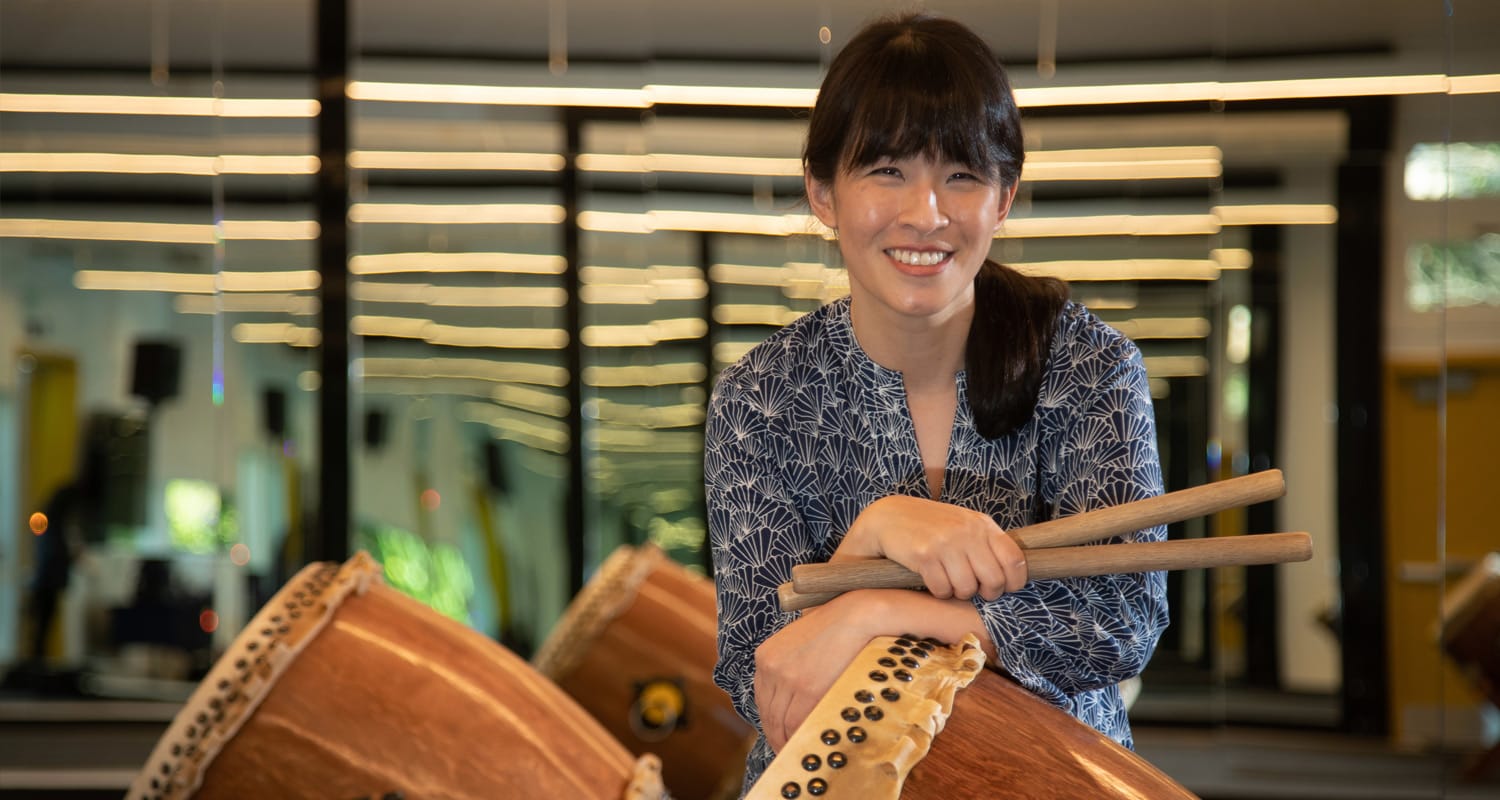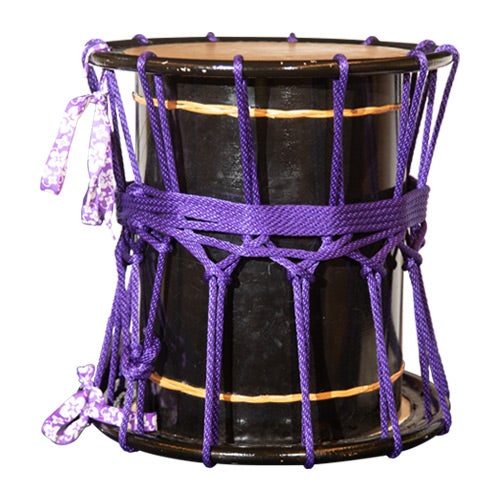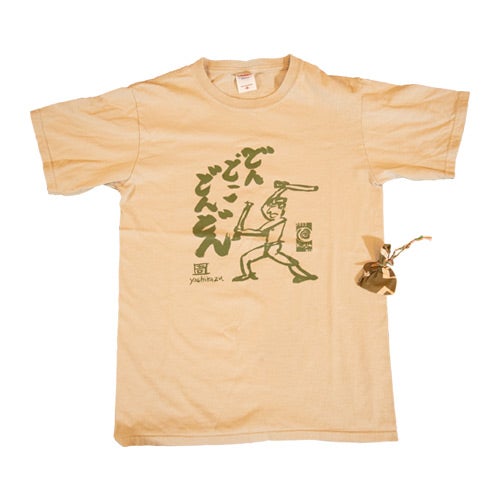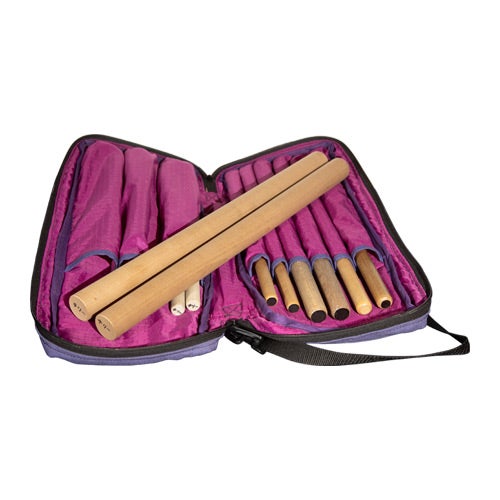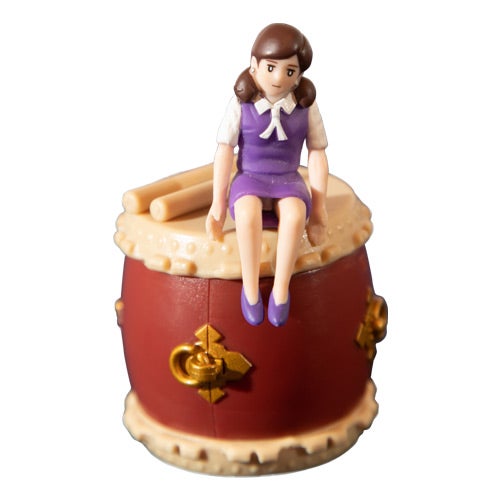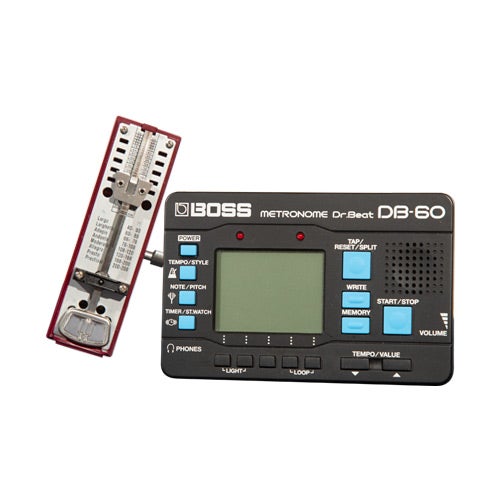OFFICE HOURS
THE SOUND OF MUSIC
Terry Nguyen is drumming up interest in Japanese culture and musical traditions as leader of UCR’s Taiko Ensemble
By Sandra Baltazar Martínez | Photos by Stan Lim
erry Nguyen’s cultural connection to Japan is bound by music. Taiko music, to be specific. Nguyen, a lecturer in UCR’s Department of Music, has led UCR’s Taiko Ensemble for the past five years. The program was established in 1998 under music professor Deborah Wong and directed by the late Rev. Shuichi Thomas Kurai, a pioneer of North American taiko and founder of the Taiko Center of Los Angeles. Nguyen, who graduated from UCR with a bachelor’s degree in music and culture, was a student under Kurai, who later became her mentor.
From the Japanese word meaning “drum,” taiko in North America refers to the practice of ensemble taiko drumming. Generally performed in a group, it is a mix of rural traditions including festival drumming, Buddhist ritual drumming, and martial arts. The powerful vibrations emitted by the barrel-shaped drums connect Nguyen with her ancestors, and in the Inland Empire, she has contributed to taiko becoming a community-building force. Nguyen is executive director of TaikoMix, a Riverside-based performing ensemble that educates the public about taiko, its history, and its cultural significance.
“This started as a recreational interest for me. I have a piano background, but getting started in taiko was a way of getting in touch with my roots,” she said.
In February, Nguyen was recognized as part of the “2022 Yamaha 40 Under 40 — Celebrating Excellence in Music Education” list for her work in elevating this musical tradition among students and beyond. She was one of 275 nominees from across the United States.
“Southern California has the highest concentration of taiko groups in the U.S.,” she said. “This is an opportunity for Asian American representation, to share culture and tradition.”
At UCR, taiko interest goes beyond the Asian American student population. Nguyen’s beginner and advanced classes are filled with white, Japanese, African, and Hispanic American students.
“Many students’ first exposure to Japanese culture or taiko has been through anime or taiko video games,” she said.
Over the course of the quarter, her students prepare for a fall performance. Her classroom is the new Barn Theater, full of natural light and surrounded by wall-length mirrors. There, she shares stories with students about the cultural significance of taiko, the importance of posture, and how to hold the bachi, Japanese for drumsticks. And if she wears a T-shirt from past performances, she shares stories of that too.
“I’ve had the opportunity to study in Japan. Even though I am not fluent in Japanese, I was able to practice and learn alongside some of the best taiko drummers in the world,” Nguyen said. “Drumming is a way to communicate with other people. The sound travels, you can feel it through your body. It heightens all your senses.”
Return to UCR Magazine: Fall 2022
